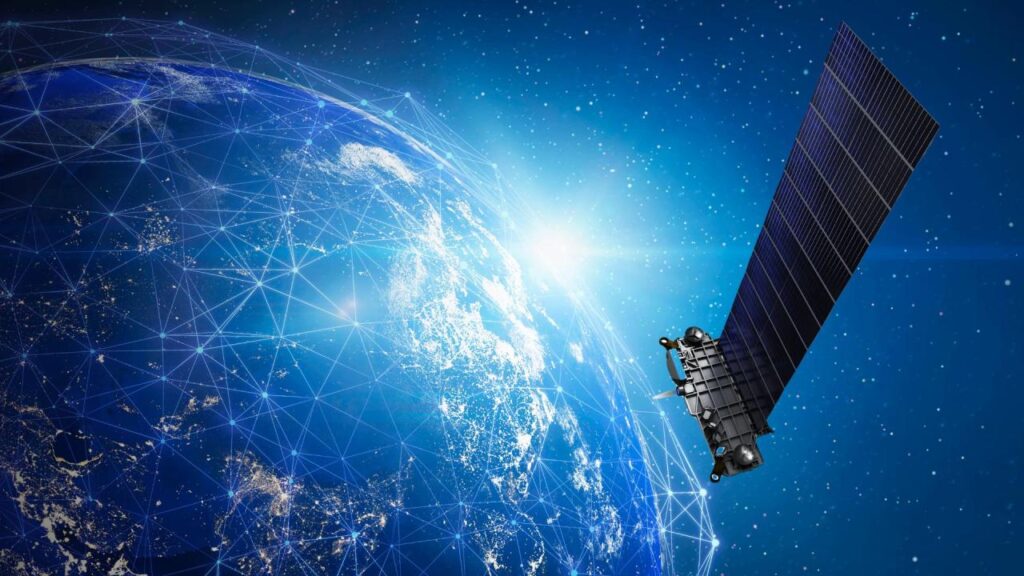In today’s hyper-connected world, access to the internet is as essential as electricity and clean water. But while urban areas enjoy lightning-fast fiber optics and 5G networks, billions of people in remote and underserved regions remain digitally excluded. Enter satellite internet—a game-changing innovation that is dramatically expanding internet availability across the globe.
What was once the realm of military operations and weather forecasting is now a vital component in achieving universal broadband coverage. Thanks to technological leaps and ambitious projects from companies like SpaceX (Starlink), Amazon (Project Kuiper), and OneWeb, satellite internet is no longer just possible—it’s scaling fast.
This article explores the technology, benefits, challenges, providers, and future of satellite internet. Whether you’re in Silicon Valley or a remote Himalayan village, the skies above might soon bring you broadband.
1. What is Satellite Internet?
Satellite internet delivers broadband services through orbiting satellites rather than traditional land-based infrastructure like cables or cellular towers.
How It Works:
A. User Terminal (Dish or Antenna): A receiver installed on homes, ships, aircraft, or vehicles that communicates with a satellite.
B. Satellite in Orbit: Usually in Low Earth Orbit (LEO), Medium Earth Orbit (MEO), or Geostationary Orbit (GEO), relaying data to and from Earth.
C. Ground Stations (Gateways): Connect the satellite to terrestrial internet backbones (fiber networks and data centers).
Unlike terrestrial services that rely on infrastructure grids, satellite internet covers vast areas from above—bridging the digital divide, especially in rural, mountainous, or disaster-affected regions.
2. Evolution of Satellite Communication
The concept of satellite-based communication began with Telstar 1 in 1962, but early internet delivery via satellites faced serious hurdles:
A. High Latency: GEO satellites orbit at 35,786 km, causing noticeable delays (up to 600ms).
B. Limited Bandwidth: Older satellites couldn’t handle modern streaming, gaming, or large-scale conferencing.
C. Weather Sensitivity: Rain fade and cloud cover disrupted signals.
However, innovation surged in the 2010s. With LEO mega-constellations, latency dropped significantly, bandwidth increased, and deployment scaled massively—ushering in a new era of global internet.
3. Types of Satellite Internet Systems
![]()
A. Geostationary Orbit (GEO)
-
Altitude: ~35,786 km
-
Coverage: Wide (1/3 of Earth per satellite)
-
Pros: Stationary from ground point; low satellite count
-
Cons: High latency, slower speeds
B. Medium Earth Orbit (MEO)
-
Altitude: 2,000–35,000 km
-
Used by: O3b (now SES Networks)
-
Pros: Reduced latency; fewer satellites than LEO
-
Cons: Still slower than fiber or 5G
C. Low Earth Orbit (LEO)
-
Altitude: 500–2,000 km
-
Used by: Starlink, OneWeb
-
Pros: Low latency (~20–40ms), high speed, real-time applications
-
Cons: Requires thousands of satellites for coverage
4. Major Satellite Internet Providers
A. Starlink (SpaceX)
-
Over 6,000 satellites launched as of 2025
-
Speeds up to 250 Mbps
-
Low latency (~20–40ms)
-
Active in over 70 countries
-
Serving homes, businesses, RVs, ships, and aircraft
B. OneWeb
-
UK-based; focused on enterprise and government
-
Partnership with AT&T, Bharti Airtel
-
Targeting polar and remote regions
-
Plans for 648 LEO satellites
C. Project Kuiper (Amazon)
-
Plans to launch 3,236 LEO satellites
-
First launches in 2024
-
Integrated with Amazon Web Services (AWS)
D. Viasat & HughesNet
-
GEO-based legacy providers
-
Good for rural North America
-
Slower speeds but cost-effective for basic access
5. Benefits of Satellite Internet

A. Global Coverage
From mountaintops to deserts and oceans, satellite internet reaches places traditional networks cannot.
B. Disaster Resilience
When earthquakes or hurricanes destroy cell towers and cables, satellites stay operational—vital for emergency response.
C. Rapid Deployment
No need to lay fiber-optic cables or erect towers—ideal for temporary events, military operations, or remote research stations.
D. Scalability
Mega-constellations can serve millions simultaneously with dynamic routing and spectrum reuse.
E. Mobile Connectivity
Satellites serve ships, airplanes, and vehicles, enabling in-flight and offshore Wi-Fi.
6. Challenges Facing Satellite Internet
A. Cost and Affordability
-
Initial cost for user kits ($300–$600)
-
Subscription fees often higher than local ISPs
-
Long-term prices expected to drop with scale
B. Regulatory Hurdles
-
National governments must approve satellite services
-
Frequency allocation conflicts (e.g., with telecom providers)
C. Space Debris
-
Thousands of satellites increase orbital collision risks
-
Need for responsible deorbiting and space traffic control
D. Weather Sensitivity
Rain, snow, and dense cloud cover can affect signal strength—particularly at higher frequencies like Ka-band.
E. Latency vs. Ground Fiber
Although LEO reduces latency significantly, fiber-optic lines still offer lower latency for financial markets or gaming.
7. Applications Across Industries
A. Education
-
Students in rural or island communities access digital resources and online classes.
B. Healthcare
-
Telemedicine reaches remote clinics with real-time diagnostics and video conferencing.
C. Agriculture
-
Smart farms use connected sensors for weather data, irrigation, crop monitoring.
D. Maritime & Aviation
-
High-speed connectivity for crews, passengers, and logistics across oceans and skies.
E. Government & Defense
-
Secure, resilient communication for border patrol, disaster zones, and military ops.
8. Satellite vs. 5G vs. Fiber: A Comparison
| Feature | Satellite Internet | 5G Wireless | Fiber Optic |
|---|---|---|---|
| Coverage | Global | Urban/Suburban | Urban/Suburban |
| Speed | 100–250 Mbps (LEO) | Up to 10 Gbps | Up to 10 Gbps |
| Latency | 20–40ms (LEO) | ~1–5ms | <1ms |
| Mobility | Excellent | Good | Poor |
| Infrastructure | Minimal ground infra | High infra need | Requires cable grid |
| Cost | Medium to High | Medium | Low (if available) |
Satellite excels where fiber or 5G cannot reach—but isn’t necessarily a replacement. Instead, it complements terrestrial networks, forming a hybrid global internet fabric.
9. Environmental & Ethical Considerations
A. Light Pollution
Astronomers worry about star visibility due to satellite reflectivity—Starlink now includes “dark satellites” with visors.
B. Space Junk
Orbits become crowded, increasing collision risk. Regulatory bodies now mandate end-of-life disposal plans.
C. Digital Equity
Global satellite access could empower underserved populations—but only if affordable and inclusive.
D. Net Neutrality
Who controls global internet traffic from space? Ensuring neutrality is crucial in cross-border communication.
10. Future Outlook of Satellite Internet
A. LEO Megaconstellations
Expect 50,000+ active satellites by 2030, offering near-total Earth coverage.
B. Laser Inter-Satellite Links
Satellites will communicate with each other via lasers—eliminating the need for ground stations, reducing latency further.
C. AI & Adaptive Routing
Artificial intelligence will optimize network paths dynamically, boosting performance and reliability.
D. Interoperability with 5G & Wi-Fi
Future networks will seamlessly shift between satellite, 5G, and fiber based on signal strength and application.
E. IoT Expansion
Satellite backhaul will empower rural IoT solutions—connecting everything from cattle to climate sensors.
Conclusion: A Sky Full of Possibilities
Satellite internet is not just a technological novelty—it is a revolution in global communication. With its ability to transcend geography, it offers new opportunities for education, healthcare, business, and innovation in even the most remote corners of Earth.
As the infrastructure scales and prices drop, satellite internet could become as common as mobile phones. The vision of a connected planet—where every human can access information, learn, work, and thrive—is finally within reach.
Whether you’re a business expanding to rural markets or a family off-grid, satellite internet might soon be your link to the world.







